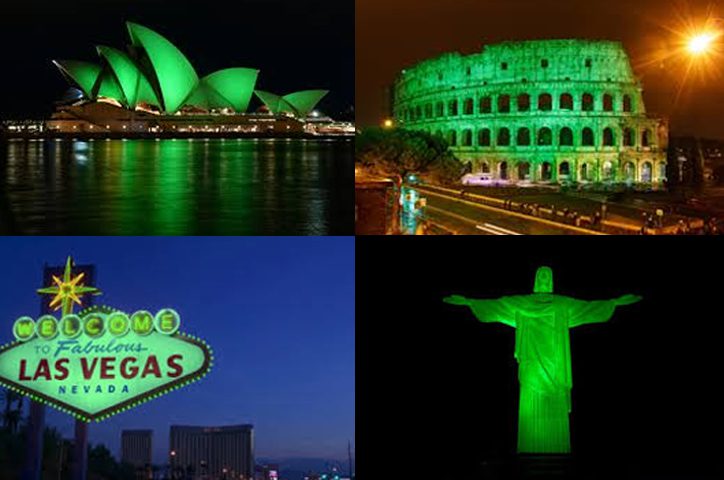For our current St. Patrick’s Day clothing and accessories collection please click here.
St. Patricks Day or (Lá Fhéile Pádraig in gaelic) is a celebration of the patron saint of Ireland which takes place every year on 17th March. As we prepare to wet the shamrock (at home!), we ask who was St. Patrick? How did he become synonymous with Ireland? Did he really banish all snakes from Ireland? Why celebrate in March? And how did St. Patrick’s Day spread around the world?
St. Patrick, who lived during the fifth century, was born in Britain. He was kidnapped by Gaelic raiders and brought to Ireland as a slave at the age of 16. He is thought to have spent 6 years in Armagh looking after animals, before escaping back to Britain. In Britain, he became a cleric and later returned to northern and western Ireland as a missionary to spread the word of Christianity to the people of Ireland. In later life, he served as a bishop, but little is known about the places where he worked. St. Patricks Day is celebrated on March 17th as this is the date he is believed to have died in 461.
The shamrock became associated with St. Patrick as legend credits him with using the three leafed shamrock, a native Irish plant, to explain the Holy Trinity (Father, Son and Holy Spirit) to the Irish. The shamrock has since become a central symbol for St. Patricks Day. Legend also attributes the absence of snakes in Ireland to St. Patrick who is said to have chased them all into the sea after they attacked him while he was fasting on a hill.
By the seventh century, St. Patrick had come to be revered as the patron saint of Ireland. Later in time, the saint became associated specifically with Catholic Ireland and with Irish national identity. Now, St.Patrick’s Day celebrations include many traditions that are have endured through time because of their association with St. Patrick such as the wearing of green, the blessing and wearing of shamrocks.
As he is credited with bringing Christianity to Ireland, the 17th March is both a cultural and religious celebration in Ireland. Celebrations are held in most towns across the island of Ireland and generally involve public parades and festivals, céilís (Irish traditional music sessions), and the wearing of green attire or shamrocks. The participants generally include members of the community such as marching bands, the military, fire brigades, cultural organisations, charitable organisations, voluntary associations and youth groups
Christians also attend church services and historically the Lenten restrictions on eating and drinking alcohol were lifted for the day. The Saint Patrick’s Day custom of “drowning the shamrock” or “wetting the shamrock” was historically popular, especially in Ireland. At the end of the celebrations, a shamrock is put into the bottom of a cup, which is then filled with whiskey, beer, or cider. It is then drunk as a toast to Saint Patrick, Ireland, or those present. The shamrock would either be swallowed with the drink or taken out and tossed over the shoulder for good luck
St. Patricks Day has now become a global celebration of Irish culture. But Saint Patrick’s Day parades actually began in North America in the 18th century by Irish emigrants and did not spread to Ireland until the 20th century. Since 2010, famous landmarks have been lit up in green on Saint Patrick’s Day. The Sydney Opera House and the Sky Tower in Auckland were the first landmarks to participate and since then over 300 landmarks in fifty countries across the globe have gone green for Saint Patricks day.

